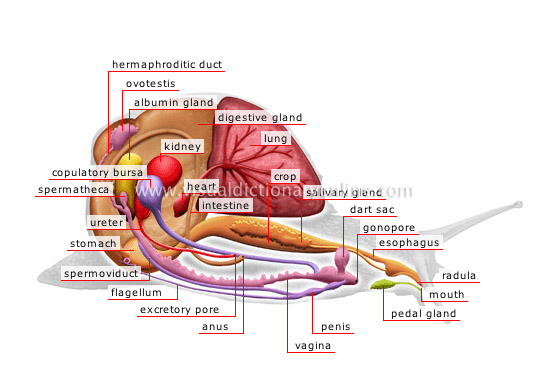
Nutrition
Since the information on our species, Fumonelix archeri, is relatively limited, we can look to other gastropods, especially pulmonates, to find out how they obtain nutrients.
The main feeding mechanism utilized by class Gastropoda is the chitinous radula, as seen on the
Adaptation page. The radula is a rasping organ used for
scraping, tearing, or drilling into prey (Hickman
et al, 2009). The snail's radula can scrape food off of the
substrate, and it can also carry the food particles to the mouth (Hickman
et al, 2009). It is said that if one listens closely, the barely
audible "chomping" of snails on their food can be heard; but having
knowledge of the radula, we know what is actually being heard is the
snail's radula scraping food and breaking it apart (Pulmonates,
2010).
There are so many different environments which land snails
inhabit, that the foods used by these terrestrial Gastropods are
incredibly varied (Barker,
2001). Since Fumonelix archeri live only in Tennessee,
their environment is drier than that of some other pulmonates (U.S.
Fish & Wildlife Service, 2012). Therefore, having a herbivorous
diet, they would be expected to feed upon materials such as stems,
soft bark, fungi, algae, or other types of plant material available
(Pulmonates,
2010).
Once pulmonates like Fumonelix archeri ingest their
food, ciliary currents move food through the digestive tract to the
stomach, where digestion takes place, primarily extracellularly (Pulmonates,
2010). The food is then broken down by enzymes that get secreted
by salivary and digestive glands (Mollusca,
2007).
Learn more fun facts about the reproduction by clicking
here.
To go back to the home page click
here.
